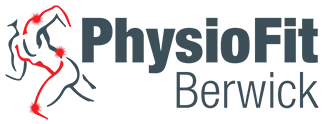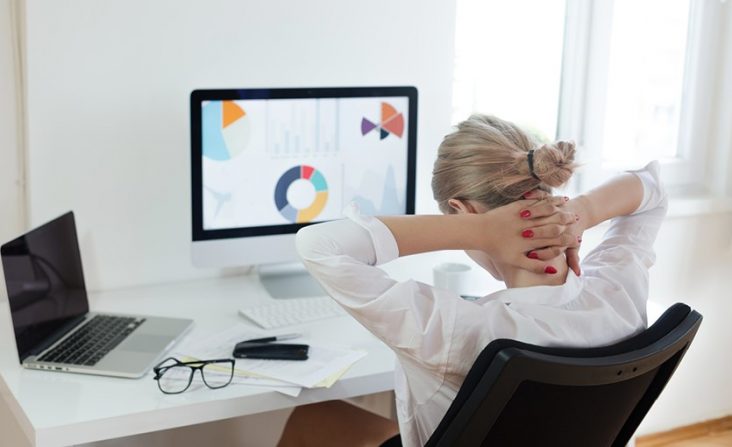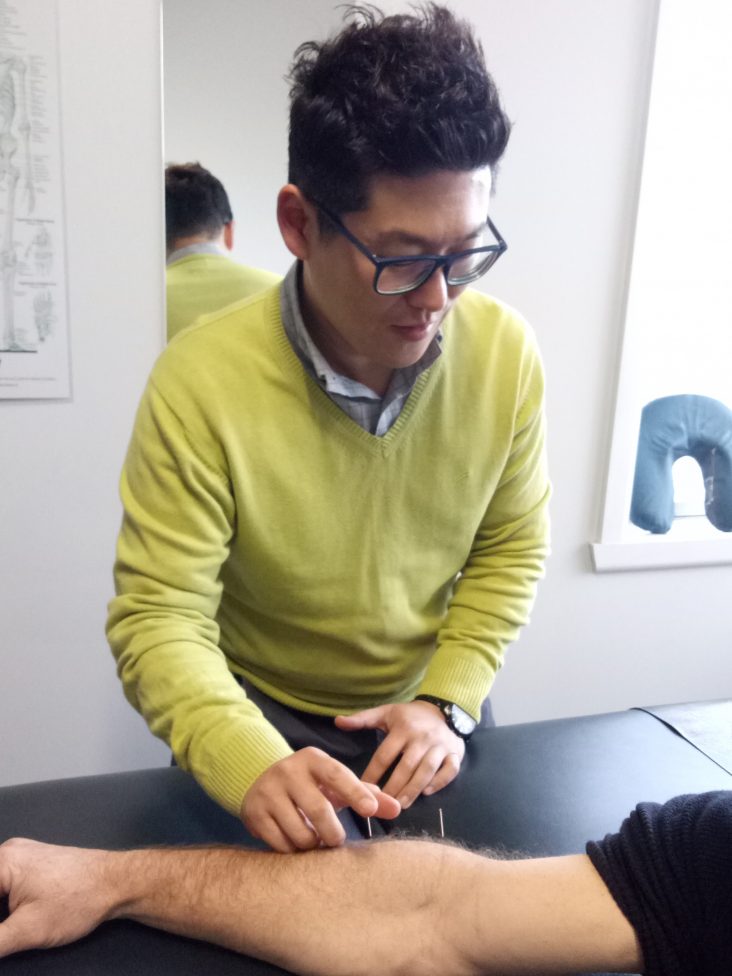Here are some simple tips/tricks to prevent neck and back pain when working from home…
- Posture
Our desks/seats are generally designed so that we sit in a slumped, forward head posture. Believe it or not, your head actually weighs about 5kg! If your head isn’t positioned correctly over your neck, this weight can increase the pressure on the joints, ligaments, and muscles of the neck.
Imagine that you are drawing a line from your earlobe down to your shoulder, then down to your hip. If your ear-lobe is sitting forwards of your shoulder, you may need to gently tuck your chin in. If your shoulder is sitting forwards of your hip, you may need to think of opening through your collarbones.
Our bodies are designed to conserve energy and use as little of it as possible. Sometimes, you may find your lower back slumping into your chair. It can be helpful to place a rolled-up towel or lumbar support behind your back. This will act as a prompt, and encourage you out of the slumped position.
- Daily exercise/activity
The WHO (World Health Organisation) recommends at least 30 minutes of moderate intensity exercise at least 5 days per week for adults aged 18-64. This doesn’t mean you have to go for a 10km run. Breaking up your day with a short walk in the morning, and short walk in the afternoon may be enough to help prevent aches and pains. Find a type of exercise that you enjoy!
- Regular movement/stretching
Motion is lotion. Joints like movement. When we sit for long periods, particularly in a slumped/flexed position, this puts us at higher risk of lower back injury. To help compensate for the time spent in this flexed position, lower back extensions/cobra exercises can be particularly helpful.
To do these, lying on your stomach, gently prop up onto your elbows, the lower. Repeat 10 times. If these are easy, you can progress to propping up onto your hands.
Some gentle neck stretches/movements can also be helpful. Gently tilting your head will stretch through the upper trapezius muscle, whilst gently rotating your head will help to prevent stiffness of the joints on the side of the neck.
- Self-massage with tennis ball/spikey ball
If you find you do have some “tight” spots in your muscles from sitting, a helpful hint is to use a tennis ball/spikey ball. Lean against the wall with the ball under the “tight” muscle, and gently roll until you find a “tight” spot. Hold and wait for approximately 10 seconds, until the pain starts to subside. Roll the ball and repeat in other “tight” areas in the muscle.
- Get up at least once every hour
Sitting for prolonged periods of time can put pressure on the joints, ligaments, and muscles in our neck and back. Try to get up and move around at least once every hour. This helps to lubricate the joints and prevent that joint stiffness/pain. You will feel better for it.
The advice above is general. If you are experiencing any neck or back pain from WFH, we recommend that you come and see one of our physios so that you can have personalised assessment and treatment, with a home exercise program tailored to you specifically.
Emma Selbie (Physiotherapist)




